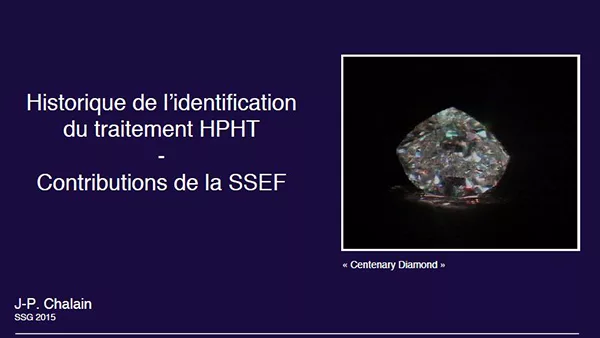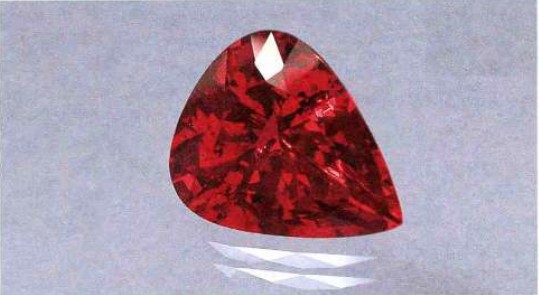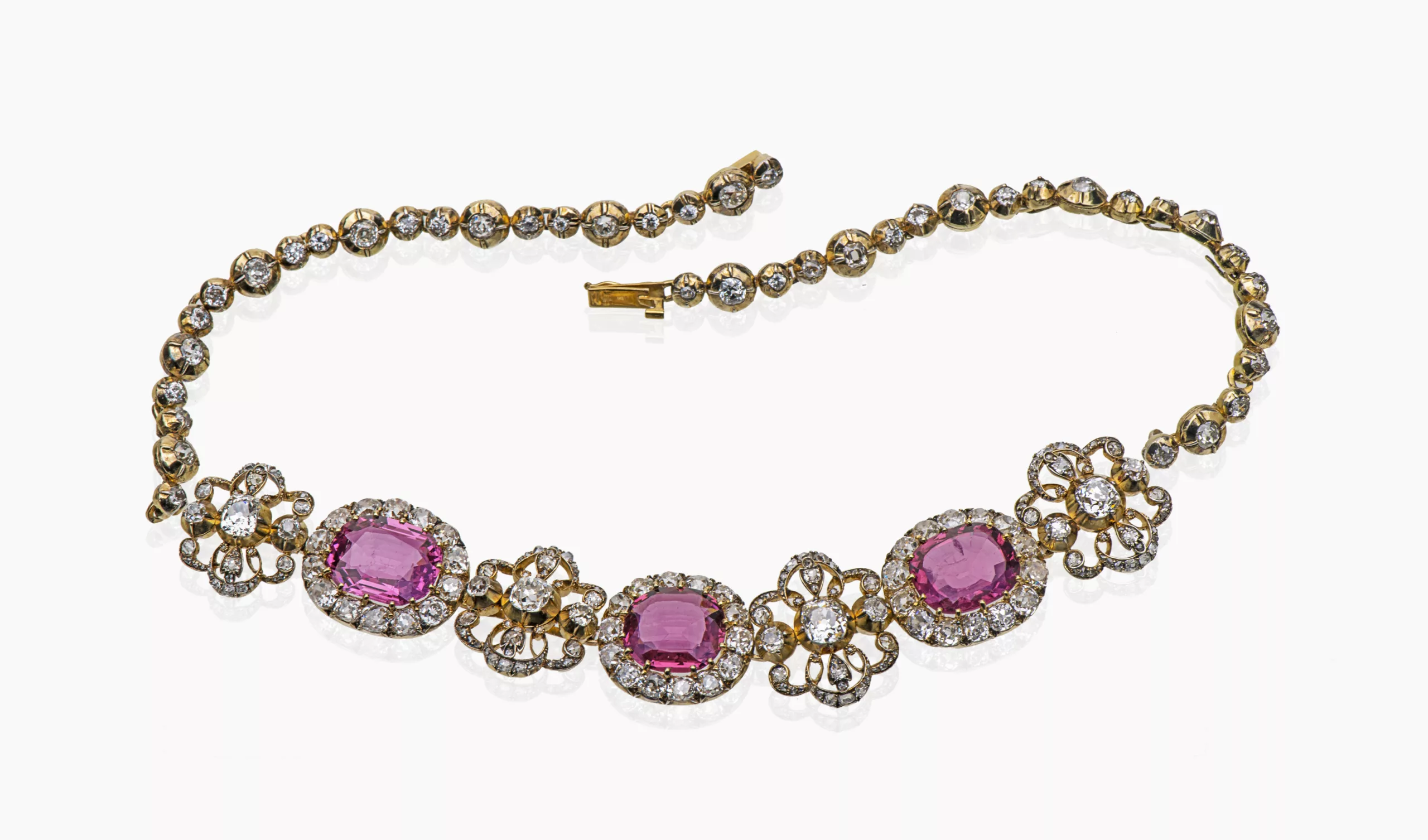
Heated spinel from Tajikistan
by Dr. M.S. Krzemnicki, first published in Facette 27 (June 2021)
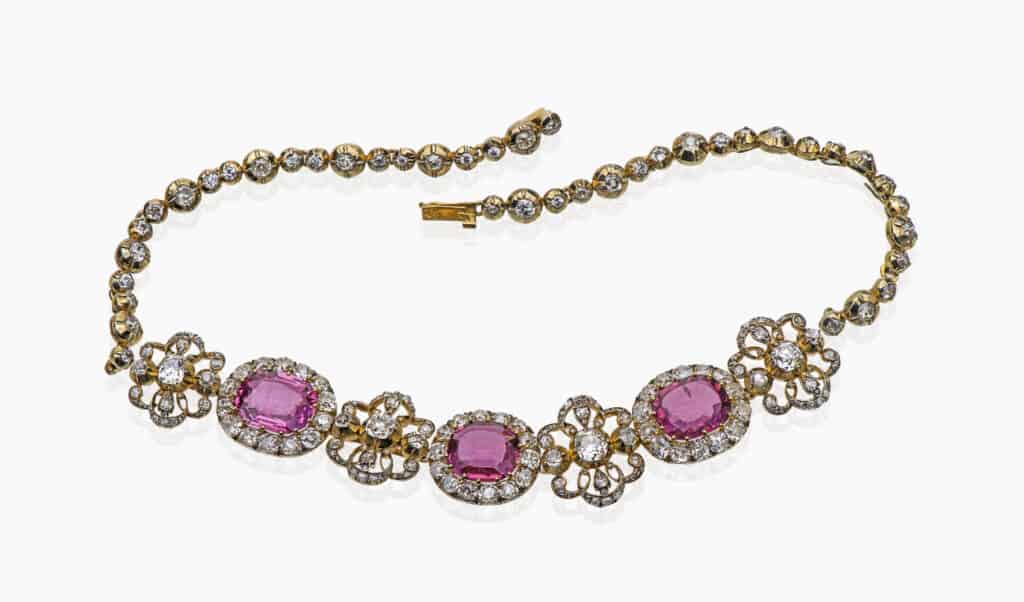
In a gem lab, always expect the unexpected. At least this can be said about this antique spinel necklace that we received a few months ago for testing at SSEF. The necklace contained three reddish pink spinels (A-C), each with an estimated weight of about 8 ct, and set together with a fine selection of colourless diamonds in an antique floral design.
The spinels were nearly free of any inclusions except for a few tiny colourless forsterite inclusions. In combination with trace element analyses, the origin of these spinels could be unambiguously attributed to the famous spinel mines near Kuh-i-Lal, located in the Pamir mountains in southern Tajikistan, close to the Afghan border. This deposit is known since historic times as a source of excellent reddish to pink spinel specimens. Already described by Al-Biruni (973-1047 AD) in his book on gems, spinel from Kuh-i-Lal was appreciated as an imperial gem throughout history. In ancient times named “Balas rubies” (from the Arabic balakhsh for Badakhshan or Balashan) their identity as spinel was only unveiled with the advent of modern mineralogy at the beginning of the 19th century. In fact, the famous historic Timur ‘ruby’ and Black Prince ‘ruby’ are both very impressive polished spinels from this ancient deposit, and are today part of the royal collection of the Queen of England.
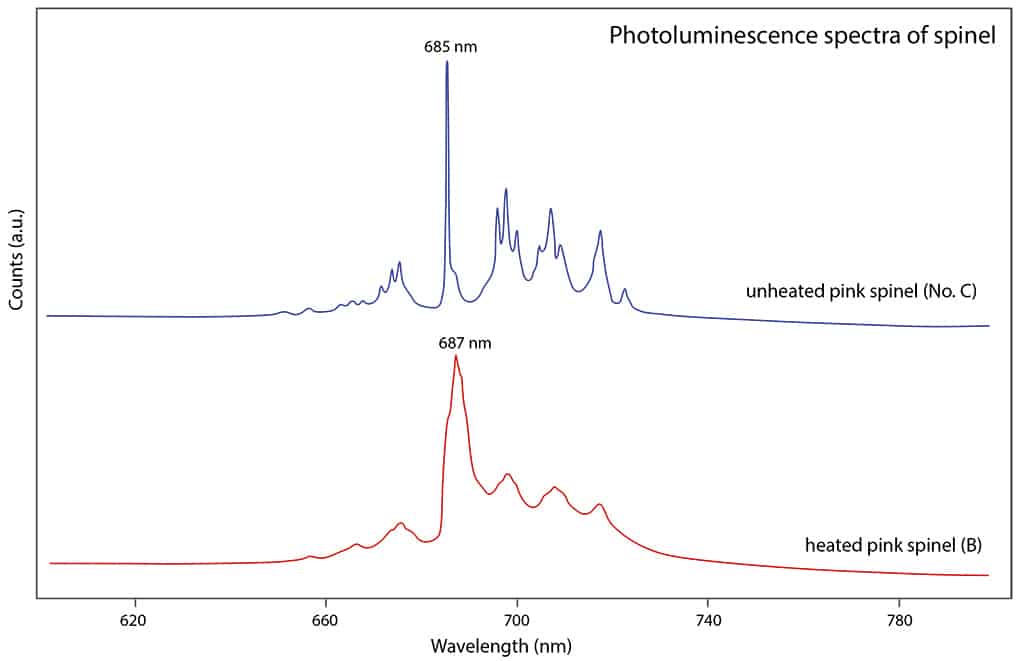
The unexpected surprise with this historic item was revealed when analysing the photoluminescence of these three spinels. The centre stone (spinel B) clearly showed a peak shift of the main chromium-emission band to 687 nm together with a peak broadening of all emission lines when compared to the much more structured and narrow emission lines of the other two spinels. In scientific literature, this peak shift and broadening effect is well documented as a characteristic feature for both synthetic spinel (see e.g. Krzemnicki 2008) and heat-treated spinel (Saeseaw et al. 2009, Widmer et al. 2015). Based on our analyses, a synthetic formation of the centre spinel (B) could be definitively excluded. Instead, and to our big surprise, this spinel had at some stage been heated.
Several studies about the effect of heat treatment on spinel have shown that in most cases there is no or only very limited success to enhance the colour or transparency with this treatment. As a positive consequence of this obvious lack of reaction to heating, we can still say today that a large majority of spinel in the market are unheated. They need only to be cut and polished to create exceptional gems for jewellery.
The reason why the central spinel (B) in this necklace was heated and at what moment this occurred remains a mystery to us. We guess that the heat treatment was done in the 18th or 19th century, prior to the setting into the necklace. We further assume that the heating was done rather by accident. Perhaps the spinel was unknowingly mixed with corundum, for which already at that time there was a tradition of heating in order to enhance the colour of corundum. Although the detection of this heat-treated spinel may be seen as a disappointment for the client, it has definitely added to the mystery and interest for us as gemmlogists.

